Timeline
January 2019
Team
Thomson & Mahima
This project was done as part of a 2 week postgraduate studio “Gigs, Service-systems & Platforms, and Design” at Srishti institute of Art, Design and Technology.
Tags: Problematising, Design Activism, Speculative Probe
The Context

Many apartment complexes in Bengaluru are now being managed with the help of apps like Apna Complex, MyGate, Apartment Adda, etc. that can be used to keep track of everything from maintenance payments, to monitor entry and exit at the main gate, to being a community forum for people in the building to talk about what’s going on. Instead of finding ways to imporve the UX of these platforms, my team mate and I decide to explore the power relations at play in this system and found some problematic implications on the lives of domestic help who work in these apartments.
One of things that caught our attention was how these tracked and represented domestic help. We tried to look at this from the point of view of the interface.
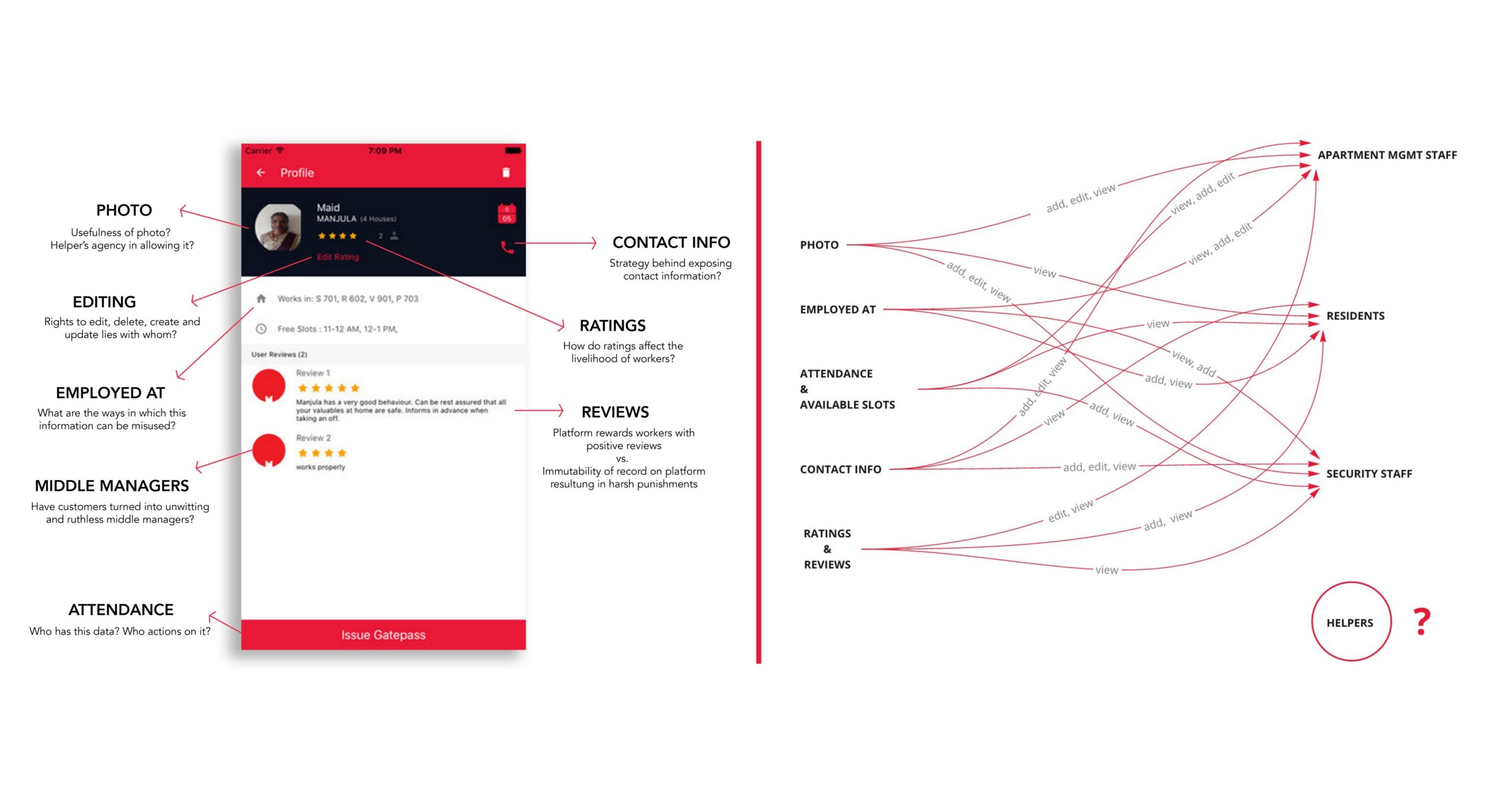
Process Work
We narrowed down on ratings as a feature we would explore from a speculative point of view with the aim to bringing the implications of the use of this feature to the notice of domestic help. To understand the situated context we did the following –
- Interviewed a family staying in a gated community to understand their perspective of the use of this platform and the power dynamics between the the family and their domestic help.
- Interviewed 3 different domestic help who worked in apartments using these platforms.
- Created 2 iterations speculative probes (first one failed, second one worked!)
The first probe – a make-believe voice activated band
With our first research participant, we tried to explore the design of a voice-activated band that would
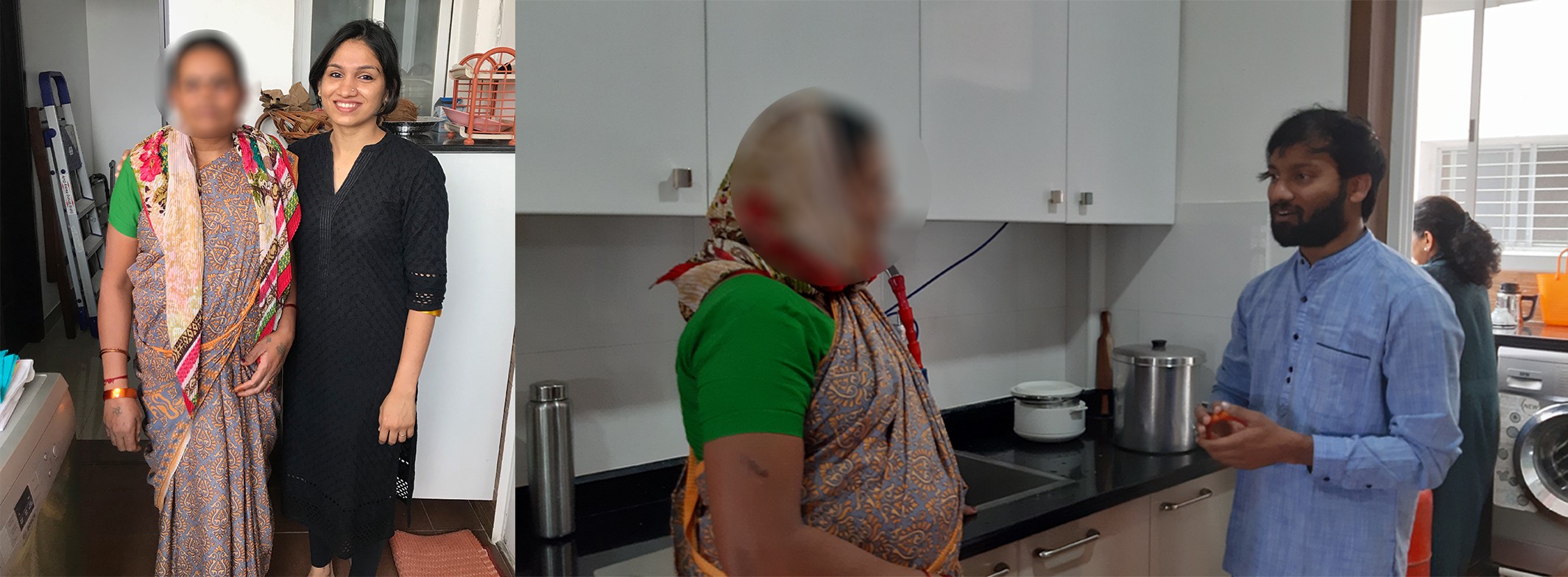
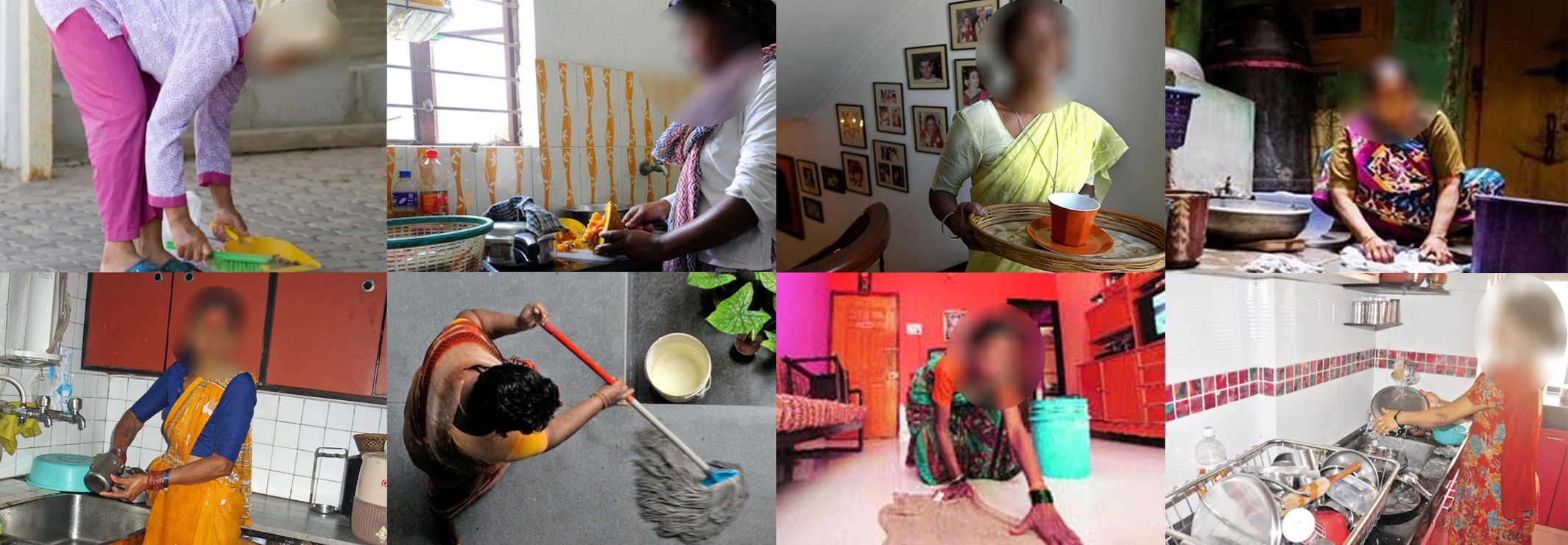


P1 stopped picking up our calls and we couldn’t demonstrate this prototype (by acting it out in front of her). But on further reflection with peers we realised that we were rushing with solutions and this was too much of leap of imagination for our research participants.
Back to the drawing board!
We decide to start from scratch and found P2 whom we interviewed. Based on the interview data and from other stories we created a rating activity board which we were able to get P3 to engage with.
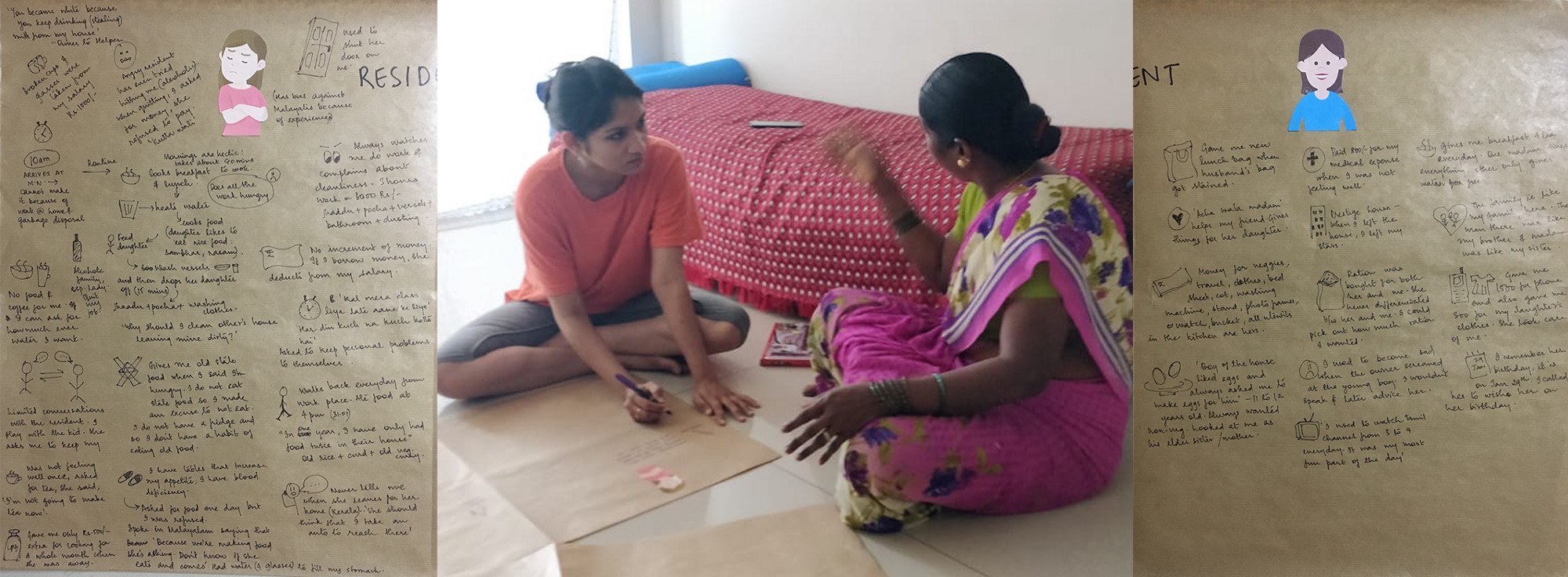

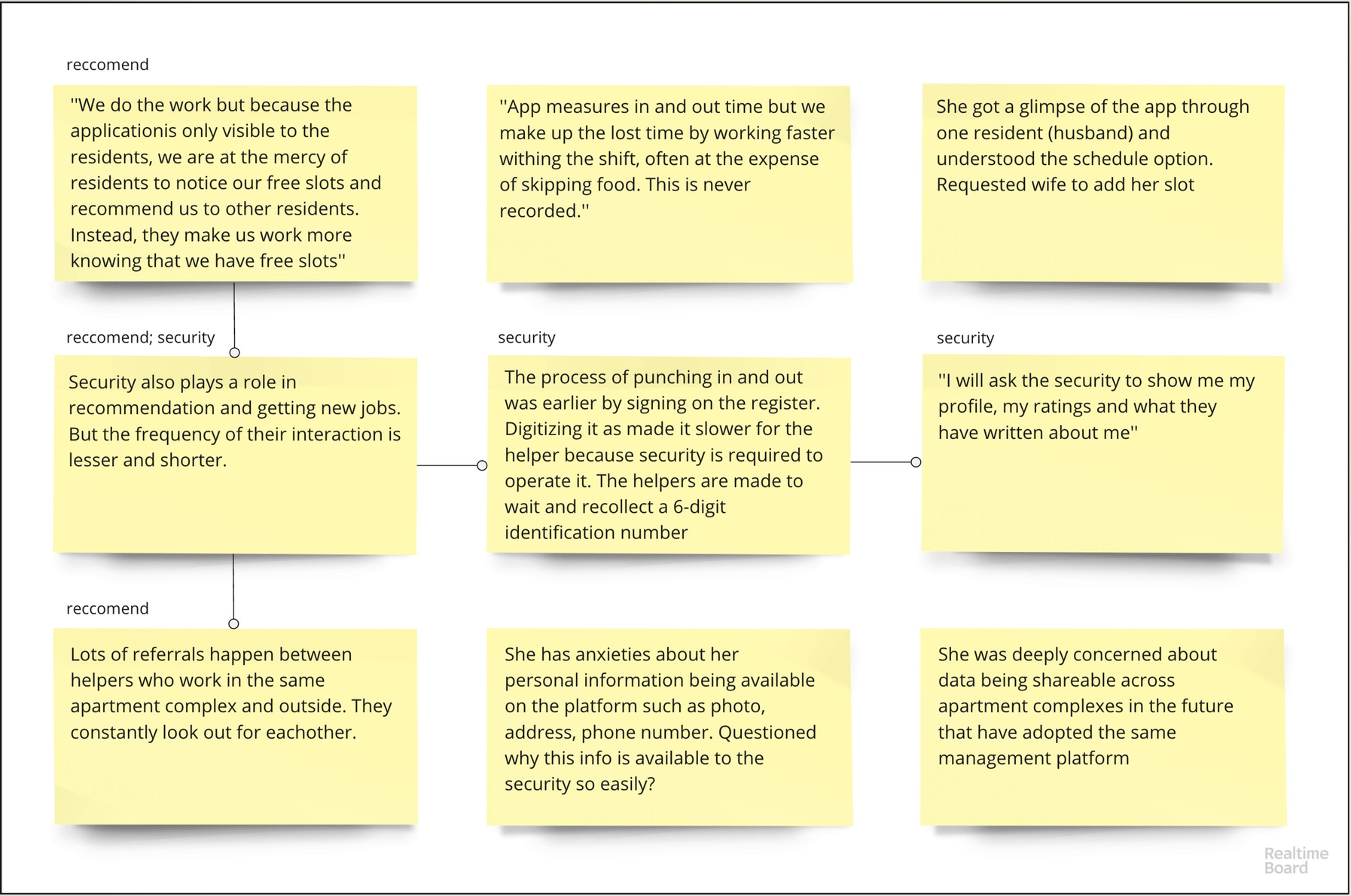
The Concept that worked
We synthesised the data from the above interviews to create a speculative probe which would fulfil our purpose of bringing the attention of domestic help towards the implications of the rating feature on this platform. We used After Effects to create the special fx required to show the in-app interactions.
Insights
P3 watched the movie and provided us her feedback which we were able to connect with our other research data points to come up with the following insights.
Insight #1
The platform chose to quantify her work in ways that she did not find valuable. For example, she felt that it would have helped if, besides tracking her in/out time, the platform also measured how she went about compensating for the time lost in arriving late by doing her job more efficiently and quickly.

Insight #2
By accessing the platform the domestic help hoped that it would enable her to do the following –
- Take ownership of her availability for work (setting and removing slots)
- Be able to access to data points relevant to her — her rating and reviews
- Search for lucrative employment opportunities (houses that pay well)
- Search for safe and considerate places to work (a good household)

Insight #3
An apartment is not a single uniform entity. Various actors within it introduce and quell anxieties of the domestic help. The injustices imposed by one actor is sometimes corrected by another and the domestic help is able to negotiate her way through some tricky situations. For example, in one household there was a lady who would make the help do more work that she had agreed to but the lady’s husband would sometimes intervene and take the help’s side. In another household there was an old lady who would abuse the help while her daughter-in-law would step in and protect her. There’s a constant negotiation of responsibilities and expectations and it is worth noting that this makes it a lot more complex to assign a single rating to a household.

Insight #4
The platform shows no concern for the privacy of the personally identifiable information of the domestic help. She expressed how she was uncomfortable that her information was on a digital platform that could be access by anybody with a phone. She was particularly concerned about the security staff, often comprised of young men, having access to her photo, phone number and address since they probably remembered her 6 digit code.

Insight #5
The lack of an official contract and not being able to enforce it results in a frequent exploitation of domestic help where they are made to work extra hours and do tasks that they don’t get any additional pay. This could be a possible area of intervention for tech and labour unions.
You can read a longer description of this project from the articles published in the studio blog below –
Part 1: Proposal
Part 2: Process Work
Part 3: Concepts/Insights
